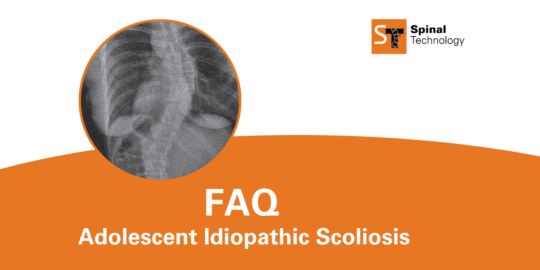Harnessing Collective Expertise: A Deep Dive into the Scoliosis Treatment Team
Embracing a collaborative and holistic approach, treating scoliosis involves a diverse team of medical professionals. From skilled doctors specializing in spinal deformities to diligent nurses providing compassionate care, and meticulous x-ray technicians capturing vital images, each member plays a crucial role in the journey of scoliosis treatment. Working hand in hand with knowledgeable orthotists shaping custom braces, dedicated physical therapists guiding rehabilitation, and other health workers each have an indispensable role in the collective pursuit of optimal patient care.

Recognizing the Collaborative Approach
The success in treating scoliosis hinges on a multidisciplinary team, where each expert brings unique skills to the table. Pediatricians or primary care physicians initially identify the condition and remain involved throughout treatment. Nurses provide essential care and ensure the patient's comfort and understanding of their treatment. The team may also include an orthopedic surgeon, who would lead the treatment plan and perform surgery if it is ultimately deemed necessary.
Roles of Various Health Workers
Health workers form the backbone of the scoliosis treatment process. Beyond the primary medical team, there are numerous specialists whose roles are crucial in managing the condition. Physical therapists design and implement exercise regimes to strengthen the patient's back muscles, potentially slowing the curvature's progression. Occupational therapists may come into play, especially for patients recovering from surgery, helping them adapt to daily activities with their new physical limitations. Psychologists or counselors often support the patient's mental health, addressing the emotional impact of living with a chronic condition. In the case of children and adolescents, school nurses play a significant role in providing ongoing support and ensuring that the treatment plan is accommodated in the school environment. Each health worker contributes to a network of care that prioritizes the patient's well-being, both physically and emotionally.

The Power of Collaboration
A radiologist or x-ray technician is key for accurate diagnosis and monitoring progression, taking precise images that guide treatment decisions. Additionally, a physical therapist may oversee non-surgical interventions and pain management, contributing to a comprehensive care strategy. This collaborative approach ensures that all aspects of scoliosis management are addressed, leading to better outcomes and a more personalized care experience for the patient.
Importance of Orthotists in the Team
Orthotists are pivotal in the scoliosis treatment team, especially when bracing is part of the management strategy. An orthotist is a health worker skilled in designing and fitting orthoses, which are devices like braces that support or correct musculoskeletal deformities. In scoliosis care, they custom-build braces to fit the patient's unique body shape and curvature of the spine. The role of the orthotist extends beyond just the creation of these devices. They are also responsible for educating the patient and their families on proper brace use, maintenance, and the importance of adherence to the treatment plan. Regular consultations with the orthotist are essential for adjustments to the brace as the patient grows or as their condition changes. By providing these specialized services, orthotists contribute significantly to the non-surgical management of scoliosis, often preventing the need for more invasive procedures.

The Cooperative Advantage of Teamwork
Teamwork in scoliosis treatment offers a cooperative advantage that can significantly improve patient outcomes. By working together, team members can share insights, combine their expertise, and create a more holistic treatment plan. This approach ensures that all aspects of the patient's condition are considered, including the physical, emotional, and social effects of scoliosis. The combined effort allows for quicker adjustments in treatment plans when necessary and a more seamless integration of various therapies. Regular team meetings enable consistent communication among all professionals involved, ensuring that everyone is up to date on the patient's progress and needs. The collective expertise also provides a support system for patients and families, reinforcing the message that they are not facing this challenge alone. In essence, the cooperative nature of this team approach fosters a nurturing environment that is conducive to healing and growth.
Building Confidence and Trust in Scoliosis Care
Building confidence and trust is essential in scoliosis care. The condition can be a source of anxiety and uncertainty for patients and their families, making the clarity and consistency of information provided by the treatment team vital. When each health worker communicates effectively and demonstrates expertise in their respective fields, it instills a sense of trust in the patient. This trust is crucial for adherence to treatment plans, especially when they include long-term commitments like bracing or ongoing therapy. The team's ability to present a united front and a well-coordinated care plan also conveys to the patient that they are receiving comprehensive, high-quality care. Moreover, the involvement of patients in the decision-making process empowers them, further solidifying their confidence in the treatment. As trusted advisors, the treatment team's reliability and support are instrumental in navigating the complexities of scoliosis management.


